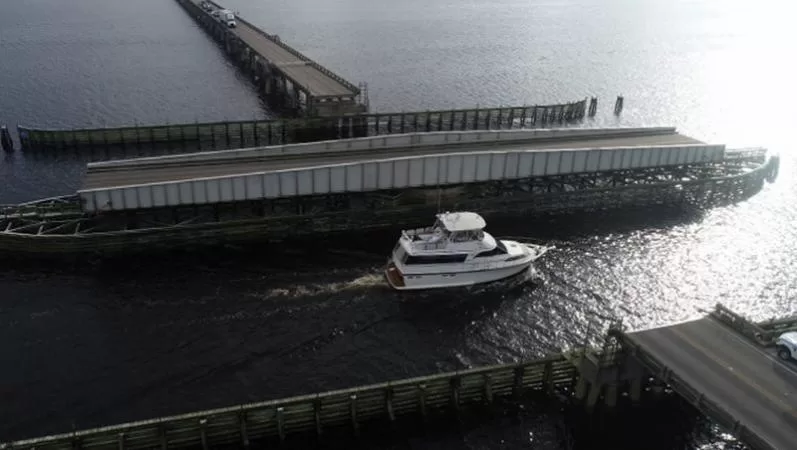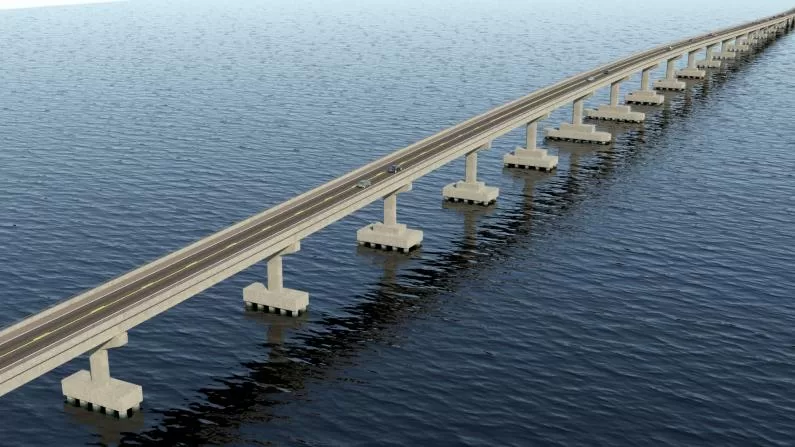The New Lindsay Warren Bridge project is a major $450 million infrastructure initiative to rebuild the historic Alligator River crossing in North Carolina. Awarded to Skanska, the project involves constructing a modern fixed-span, high-rise bridge that will replace the existing swing-span structure along U.S. 64 between Tyrrell and Dare counties. Construction is scheduled to begin this month, with completion expected by 2028, and the bridge projected to be fully operational by 2030.
Spanning approximately 2.8 miles, the new Lindsay C. Warren Bridge will feature two 12-foot travel lanes and 8-foot breakdown lanes, enhancing both safety and traffic flow. Located just north of the current bridge, the replacement structure is designed to provide a more durable and efficient connection between Columbia, Manns Harbor, Manteo, and the Outer Banks.
The current bridge, originally built in 1960, has been classified as “structurally deficient.” While still safe for use, the aging swing-span design requires frequent monitoring and maintenance, often disrupting travel and reducing reliability.
This bridge replacement forms part of the North Carolina Department of Transportation’s broader infrastructure improvement plan, aimed at increasing accessibility to the Outer Banks and strengthening evacuation routes during extreme weather events such as hurricanes. The project’s environmental planning and preliminary design phase began in early 2021 and was completed by the end of 2022.
Also looked into for the construction of the new Lindsay C Warren Bridge are the benefits to the day-to-day commuters and travelers. The bridge is one of two that connect to the Outer Banks. This new bridge will make access to the counties lying in the east of North Carolina easy and more reliable. The bridge joins the list of other major road infrastructure projects being undertaken in North Carolina like the Hampstead Bypass project.

The new look for the Alligator River Bridge by Skanska
The design for the new Lindsay C Warren Bridge: fixed-span and high-rise, is also of critical importance. Once complete, the modern bridge design implemented by Skanska will reduce the disruptions and delays currently caused by the swing bridge. This will be especially useful to marine-vehicular traffic control over the Alligator river in North Carolina that sees an estimated average of more that 4,000 boats passing thereby annually.
The new Lindsay C. Warren Bridge will serve the people of North Carolina with two 12-foot lanes, alongside 8-foot breakdown lanes on either side. Also in the rebuild plans for the $450m contract to Skanska is 65-feet clearance over the navigation channel and safety railings standing at 4.5-foot. All this is in effort to reduce commute time and see to the safety of all users of the bridge.
The current Alligator River Bridge will not be shut down during the construction period in efforts to lessen the impact on the traffic relying on the bridge.
Also noted by the senior VP of Skanska’s civil operations in the Southeast is the support the new Lindsay C. Warren Bridge will offer to the region’s economic growth. Brook Brookshire had the following to say, “By replacing the […] we’re eliminating traffic delays, improving safety and supporting the region’s economic growth for generations to come.”

